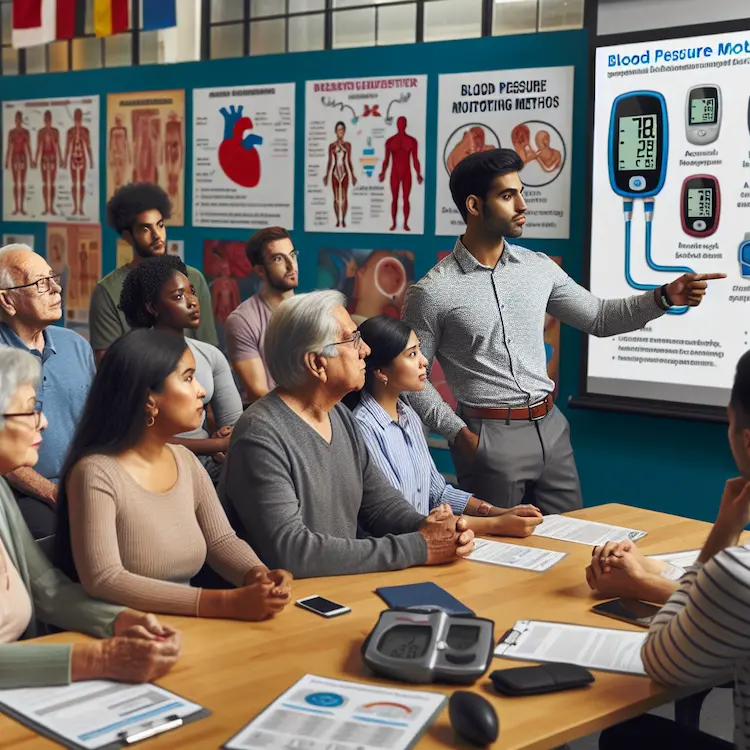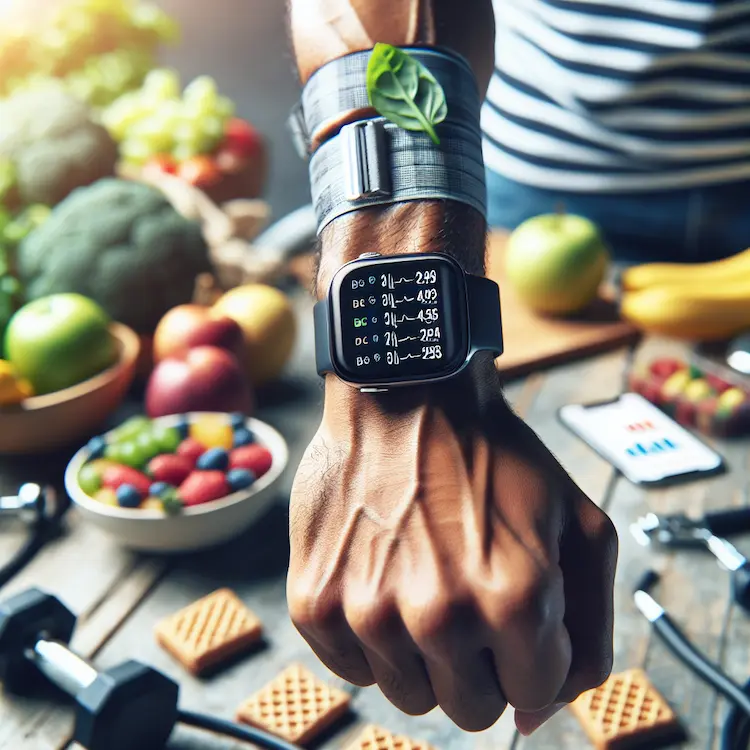Introduction
Diabetes and hypertension are two intertwined conditions that significantly impact cardiovascular health. For individuals with diabetes, maintaining optimal blood pressure (BP) is crucial in preventing complications and improving overall health outcomes. This article explores the importance of blood pressure monitoring in diabetes management, discussing various methods, tools, and approaches to help patients and healthcare providers effectively control BP levels.
The Importance of Blood Pressure Control in Diabetes
Diabetes mellitus is a chronic condition characterized by elevated blood glucose levels. When combined with hypertension, the risk of cardiovascular diseases, kidney problems, and other complications increases substantially. Proper BP management in diabetic patients is essential for several reasons:
- Reduced cardiovascular risk: Controlling BP can significantly lower the risk of heart attacks, strokes, and other cardiovascular events in diabetic patients.
- Kidney protection: Maintaining optimal BP levels helps slow the progression of diabetic nephropathy and reduces the risk of end-stage renal disease.
- Improved overall outcomes: Studies have shown that aggressive BP management in diabetic patients can have a greater impact on reducing cardiovascular events than intensive blood glucose control alone.

Blood Pressure Targets for Diabetic Patients
The optimal BP target for diabetic patients has been a subject of debate, with guidelines evolving over time. Current recommendations from various organizations include:
- American Diabetes Association (ADA) 2022 Guidelines:
- General target: <140/90 mmHg
- High-risk patients: <130/80 mmHg
- American College of Cardiology/American Heart Association (ACC/AHA) 2017 Guidelines:
- Target for all diabetic patients: <130/80 mmHg
- European Society of Cardiology (ESC)/European Society of Hypertension 2018 Guidelines:
- Systolic BP target: 130 mmHg (lower if tolerated)
- Diastolic BP target: <80 mmHg
It’s important to note that these targets may be adjusted based on individual patient characteristics, comorbidities, and overall cardiovascular risk profile.
Blood Pressure Monitoring Methods
Effective BP monitoring is crucial for achieving and maintaining target levels. Several methods are available for measuring BP in diabetic patients:
1. Office Blood Pressure Measurements (OBPM)
OBPM remains the most common method for BP assessment in clinical settings. However, it’s important to use proper techniques and validated devices to ensure accurate readings.
Pros:
- Widely available and familiar to patients
- Allows for immediate discussion with healthcare providers
Cons:
- May be affected by white coat hypertension or masked hypertension
- Provides only a snapshot of BP at a single point in time
2. Ambulatory Blood Pressure Monitoring (ABPM)
ABPM involves wearing a portable BP monitor for 24 hours, providing a comprehensive picture of BP fluctuations throughout the day and night.
Pros:
- Provides a more accurate representation of overall BP control
- Helps identify nocturnal hypertension and BP patterns
- Useful for diagnosing white coat or masked hypertension
Cons:
- May be uncomfortable for some patients
- More expensive and less widely available than other methods
3. Home Blood Pressure Monitoring (HBPM)
HBPM allows patients to measure their BP regularly in their home environment using automated devices.
Pros:
- Encourages patient engagement in BP management
- Provides multiple readings over time, offering a more comprehensive view
- Can help identify white coat or masked hypertension
Cons:
- Requires patient education on proper technique and device use
- May lead to anxiety in some patients
Comparison of BP Monitoring Methods
| Method |
Frequency |
Setting |
Advantages |
Limitations |
| OBPM |
Periodic clinic visits |
Healthcare facility |
Immediate feedback, familiar |
Limited data points, potential white coat effect |
| ABPM |
Continuous for 24 hours |
Daily life activities |
Comprehensive data, identifies patterns |
Expensive, potentially uncomfortable |
| HBPM |
Regular self-monitoring |
Home environment |
Patient engagement, multiple data points |
Requires training, potential for measurement errors |
Digital Health Tools for BP Monitoring
The emergence of digital health solutions has revolutionized BP monitoring in diabetes management. These tools combine innovative meters with smartphone apps, allowing for seamless data capture and analysis.
Key features of digital BP monitoring tools:
- Bluetooth-enabled BP cuffs for easy data transmission
- Smartphone apps for data visualization and tracking
- Integration with blood glucose monitoring data
- Trend analysis and personalized insights
Benefits of digital BP monitoring:
- Improved awareness of BP and blood glucose interactions
- Enhanced patient engagement in self-management
- Real-time data sharing with healthcare providers
- Potential for earlier intervention and treatment adjustments
A study by Fundoiano-Hershcovitz et al. demonstrated that patients using digital BP monitoring tools showed significant improvements in both BP and blood glucose control compared to those who did not use such tools.

Strategies for Effective BP Management in Diabetes
Achieving and maintaining optimal BP control in diabetic patients often requires a multifaceted approach:
- Lifestyle modifications:
- Adopt a heart-healthy diet (e.g., DASH diet)
- Increase physical activity
- Maintain a healthy weight
- Limit alcohol consumption
- Quit smoking
- Medication management:
- Angiotensin-converting enzyme (ACE) inhibitors or angiotensin receptor blockers (ARBs) are often first-line treatments
- Combination therapy may be necessary to achieve BP targets
- Regular medication reviews and adjustments based on BP readings
- Regular monitoring and follow-up:
- Establish a consistent BP monitoring schedule
- Keep a log of BP readings and share with healthcare providers
- Attend regular check-ups for comprehensive diabetes management
- Patient education:
- Provide information on proper BP measurement techniques
- Educate patients on BP targets and the importance of control
- Discuss lifestyle factors that impact BP
- Utilize digital health tools:
- Encourage the use of smartphone apps for BP and blood glucose tracking
- Consider recommending connected BP monitors for easier data sharing
Conclusion
Effective blood pressure monitoring and management are crucial components of comprehensive diabetes care. By utilizing a combination of monitoring methods, leveraging digital health tools, and implementing targeted management strategies, patients and healthcare providers can work together to achieve optimal BP control. This, in turn, can significantly reduce the risk of cardiovascular complications and improve overall health outcomes for individuals living with diabetes.
As technology continues to advance, the integration of BP monitoring with other aspects of diabetes management is likely to become even more seamless, offering new opportunities for personalized care and improved health outcomes.

